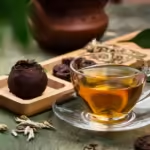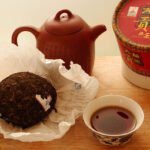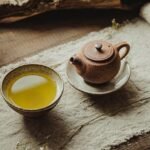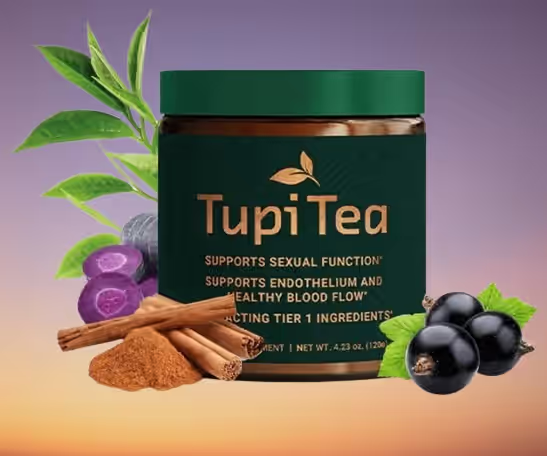Table of Contents
“Is Pu Erh a Black Tea?” is a frequently asked question by tea enthusiasts due to its dark color and rich flavor profile. To answer this, we need to explore how Pu Erh tea differs from traditional black tea, focusing on its unique processing, benefits, and the caffeine in tea.
Understanding Pu Erh Tea
Pu erh tea, a fascinating variety of fermented tea, originates from the Yunnan province of China. Its unique processing method, which includes fermentation and aging, distinguishes it from other types of tea. Over the years, pu erh has gained immense popularity among tea enthusiasts worldwide, leading to a myriad of questions regarding its classification. A common inquiry that arises is whether pu erh tea is classified as a black tea.
To address this question, it is essential to understand the different categories of tea. Traditional classifications typically include white, green, oolong, black, and post-fermented teas. Black tea, known for its robust flavor and dark color due to full oxidation, stands as a distinctive category. In contrast, pu erh tea undergoes a unique fermentation process, allowing it to develop complex flavors that deepen over time. This brings about some ongoing debate in the tea community regarding whether pu erh fits into the black tea category, as its processing and aging techniques are considerably different from those of standard black teas.
Moreover, the classification of pu erh tea extends to its styles. There are two primary types: the raw (sheng) pu erh, which is processed minimally and can age for many years, maturing in flavor over time, and the ripe (shou) pu erh, which undergoes a rapid fermentation process. These distinct styles contribute to a wide range of flavors and aromas, captivating both new and seasoned tea drinkers.
Additionally, an understanding of tea classifications becomes important when considering aspects such as taste and caffeine content. While many associate black tea with higher caffeine levels, the caffeine content in pu erh can vary significantly based on factors such as the type and processing of the tea leaves. As such, it is crucial to delve deeper into the specifics of pu erh tea to fully appreciate its place within the larger context of tea varieties.
👉 Bold, Aged, Legendary – Sip Premium Pu Erh Tea Now! 👈
Types of Pu Erh Tea: Raw vs. Ripe
To understand the classification of pu erh tea, it is essential to differentiate between its two principal types: raw (sheng) and ripe (shou) pu erh. Both types originate from the same plant, Camellia sinensis, but they undergo distinct production methods that influence their flavor, aroma, and health benefits.
Raw pu erh, also known as sheng pu erh, is produced from fresh tea leaves that are swiftly withered, rolled, and then dried without any fermentation. This process preserves the tea’s natural enzymes, allowing it to undergo a gradual aging process. The flavor of raw pu erh is characterized by a bright, floral essence and can become more complex with age, developing deeper flavors over time. As the tea matures, it may exhibit notes of woodiness, earthiness, and sweetness. Furthermore, raw pu erh generally contains higher levels of caffeine compared to its ripe counterpart, making it a stimulating beverage choice.
On the other hand, ripe pu erh, commonly referred to as shou pu erh, undergoes a controlled fermentation process known as “wo dui” to accelerate aging. This technique involves piling, moistening, and covering the tea leaves to create a microclimate that fosters microbial growth. As a result, ripe pu erh develops a darker color and a robust, earthy taste profile. The fermentation process mellows the flavor, often imparting notes of dark chocolate, leather, and damp forest floor. Ripe pu erh is typically smoother on the palate and may be more accessible to beginners. In terms of caffeine content, ripe pu erh tends to have lower levels, making it suitable for those sensitive to caffeine.
In conclusion, the distinction between raw and ripe pu erh tea is crucial for understanding their respective flavor profiles, fermentation processes, and potential health benefits. By recognizing these differences, enthusiasts can better appreciate the diverse characteristics of pu erh tea and its classification as a unique category within the tea universe.
Caffeine in Tea: Pu Erh vs. Other Teas

When exploring the caffeine content in different types of tea, it is essential to consider the unique characteristics of each variety. Specifically addressing the question, “is pu erh a black tea,” we can delve into how its caffeine levels compare to other common teas. Generally, green teas average approximately 20-45 mg of caffeine per eight ounces, while black teas typically contain around 40-70 mg. Pu erh tea, often categorized alongside black tea due to its fermentation process, can also exhibit similar caffeine readings, though several factors influence its actual levels.
One significant aspect affecting the caffeine content in pu erh tea is the brewing time. Longer steeping durations can lead to higher caffeine extraction from the leaves. It is crucial to note that pu erh is made from large, aged leaves, and the fermentation process it undergoes can alter not just its taste but also its caffeine concentration. Different grade leaves and their respective processing will yield variability in caffeine amounts. For example, younger pu erh cakes might have higher caffeine levels than older varieties, balancing between taste and caffeine potency.
Another vital factor to consider involves the specific type of pu erh tea one is consuming. Raw (Sheng) pu erh usually has a different profile compared to ripe (Shou) pu erh due to the distinct fermentation processes. Each of these is subjected to unique environmental influences, which can further impact caffeine levels. Overall, while it is safe to assert that pu erh tea can deliver a caffeine kick similar to that of traditional black teas, its precise content may vary significantly. Understanding these distinctions aids in comprehensively answering whether pu erh tea is black tea concerning its stimulating properties.
👉 Unlock Deep Flavor – Try Top-Grade Pu Erh Tea Today! 👈
Pu Erh Tea Benefits and the Myths Surrounding It
Pu erh tea has gained significant attention for its unique properties and potential health benefits, often prompting questions regarding its classification as black tea. Many individuals wonder, “Is pu erh a black tea?” This inquiry stems from the tea’s processing method, which involves fermentation, giving it distinctive characteristics that set it apart from traditional black teas. Despite this, pu erh tea is often lumped into the black tea category based on its appearance and flavor profile.
One of the notable health benefits attributed to pu erh tea is its caffeine content, which is generally lower than that of conventional black tea. This makes it a suitable option for those sensitive to caffeine and may contribute to enhanced energy levels without the jitters typically associated with higher caffeine sources. Additionally, some studies have suggested that pu erh tea can aid in metabolism and weight management, making it a popular choice for individuals pursuing healthier lifestyle choices.
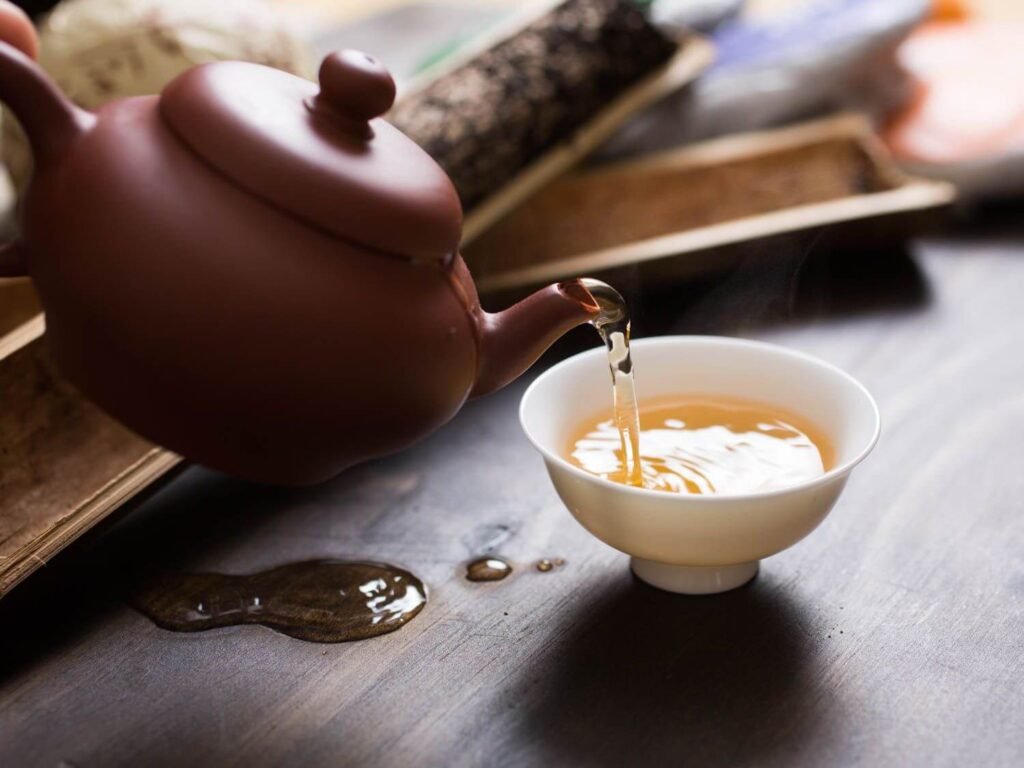
However, several myths surrounding pu erh tea warrant clarification. A common misconception posits that all fermented teas, including pu erh, possess elevated caffeine levels compared to regular black teas. This is misleading; while it is true that pu erh can contain caffeine, the amount can vary based on the specific preparation and aging of the tea. Therefore, it is essential to consider each type and batch when assessing caffeine content.
Furthermore, some believe that pu erh tea can lead to increased anxiety or restlessness due to its caffeine. In reality, many drinkers find the moderate caffeine levels in pu erh tea particularly calming, especially when integrated into a balanced diet. Understanding these nuances can help consumers make informed decisions about incorporating pu erh tea into their routine, particularly concerning caffeine requirements. In conclusion, while pu erh tea shares similarities with black tea, it offers unique health benefits and should be assessed on its own merits rather than solely within the constraints of traditional black tea classifications.
Conclusion
In summary, Is Pu Erh a Black Tea? While it shares some characteristics with black tea, including its deep, dark color and robust flavor, Pu Erh tea is a unique category of post-fermented tea. Its distinct fermentation process and aging differentiate it from traditional black teas. Understanding its benefits, from aiding digestion to potentially lowering cholesterol, adds to its appeal. Whether you’re exploring the world of tea for its health benefits, the caffeine in tea, or just for flavor, Pu Erh tea stands out as a versatile and beneficial choice.
👉 Earthy Richness in Every Cup – Experience Pu Erh Perfection! 👈


